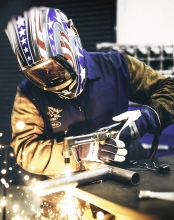
With the decline of American manufacturing since 2000, communities with above-average shares of manufacturing have fared worse than most other communities. Can anything be done to help these communities?
In a new paper and report, the Upjohn Institute’s Timothy J. Bartik concludes, based on both prior research and new research done for this project, that manufacturing-intensive communities can succeed with three cost-effective strategies:
- Expand customized services to small and medium-sized manufacturers, for example providing business advice via manufacturing extension services.
- Invest in infrastructure and services that make the community’s land better for business development, for example investing in brownfield cleanup in older neighborhoods.
- Increase public spending that improves local workers’ job skills, for example by investing in community college workforce training.
In his analysis, Bartik examined 22 manufacturing-heavy local labor markets that saw strong job growth in recent years, in order to see what helped them succeed, compared to similar communities that were not able to succeed. He found no evidence linking a community’s job growth to business tax cuts or business tax incentives.
The communities that invested instead in customized services for local businesses and workers performed better. These communities still suffered when national manufacturing dramatically declined, as it did from 2000 to the depths of the Great Recession in 2009. But if national policy at least stabilizes overall manufacturing jobs, manufacturing-intensive communities that make smart investments can show above-average job growth.
Actions such as developing workers’ skills, providing advice to smaller manufacturing firms, and preparing industrial sites don’t draw the public interest—and short-term political payoff—the way business tax incentives do, Bartik concedes. Yet he argues that the national interest is better served by strategies that invest in business productivity, not in tax incentives to relocate businesses.
With the right leadership and investments, Bartik concludes, manufacturing-intensive communities can promote more and better-quality jobs, both for their communities and for the overall U.S. economy.
Read the full technical paper | Read the report
The report was commissioned by the Center on Budget and Policy Priorities’ Full Employment Project. Views expressed within the report do not necessarily reflect the views of the Center, or of the Upjohn Institute.
